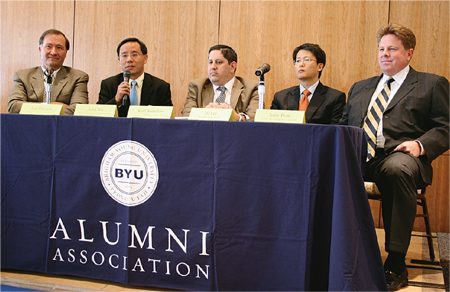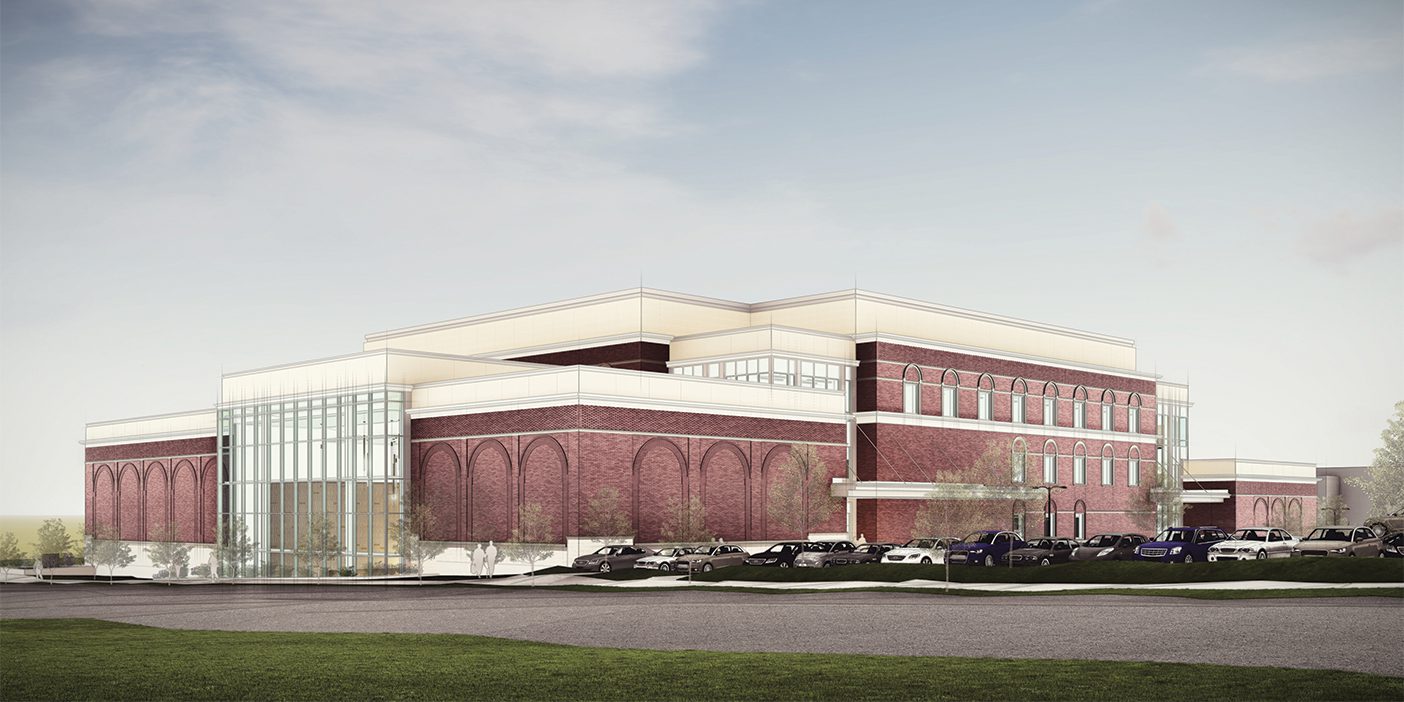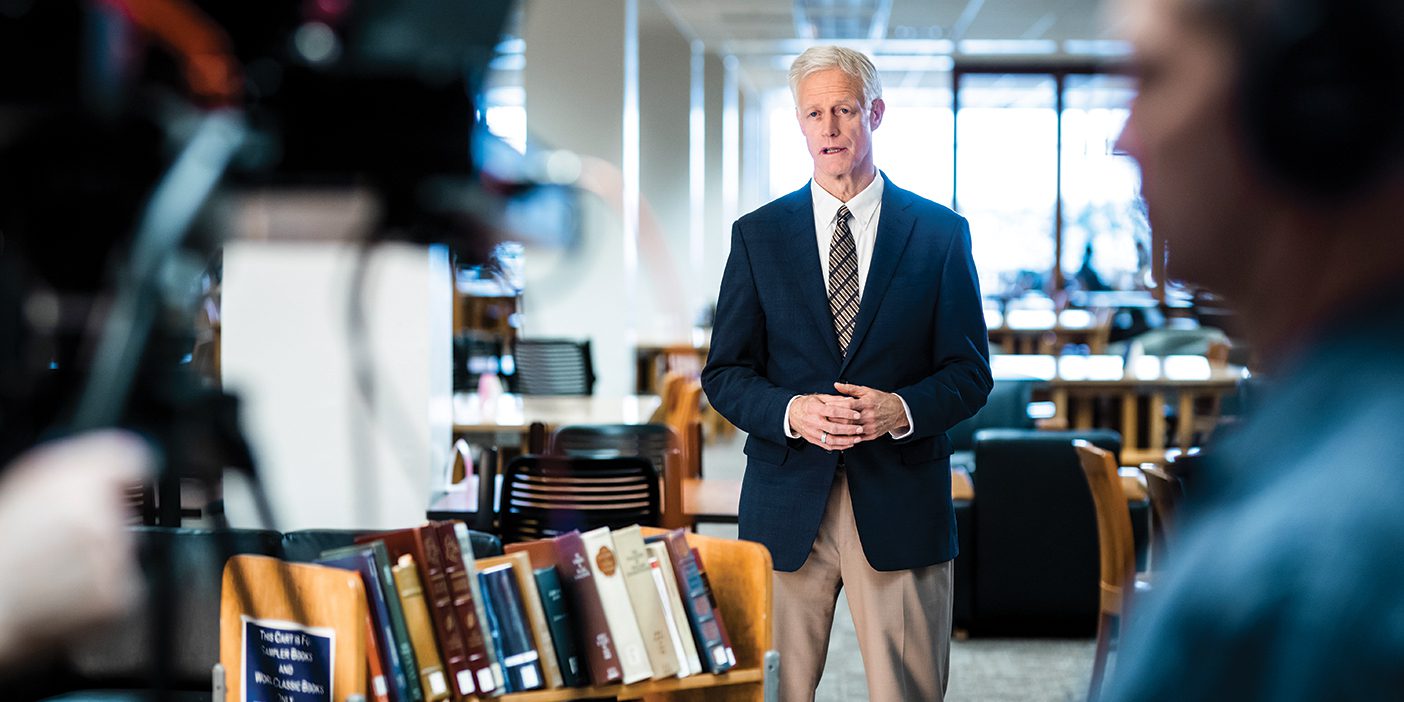At the Eyring Science Center dedication on March 10, 1998, President Thomas S. Monson of the LDS Church’s First Presidency enlisted the help of Elaine Eyring Rieske, daughter of Carl F. Eyring, to cut the ribbon restraining the Foucault pendulum. With the snip of a pair of extra-large scissors, the pendulum swung into action, showing evidence once again of the Earth’s rotation.
For the past two and a half years, the pendulum has been idle as crews gutted, upgraded, and renovated the nearly 48-year-old science center. During the project one of BYU’s most historic facilities was fitted with modern wiring, plumbing, heating, and air conditioning. The plans called for room rearrangements, seismic upgrades, asbestos removal, and the addition of some 5,000 square feet of floor space. The restructuring also accommodated a new ESC tenant. The Department of Food Science and Nutrition replaced the Chemistry Department, which moved into the Ezra Taft Benson Building in 1995. The other two departments–physics and geology–received new labs, offices, and equipment.
Physics and Astronomy Department chair Dorian Hatch says it’s good to be back in the building. “Our department was scattered among four or five different buildings during the renovation,” he says. Others experienced similar discomfort. Geology associate research professor David Tingey found himself with an office in one building and labs in four others.
Members of the Department of Food Science and Nutrition, however, are just happy to have space to call their own. “The faculty were all together in the Smith Family Living Center,” says Lynn Ogden, department chair, “but we were scrounging for labs.” The new building provides 11 research labs and five teaching labs for the department. And then there’s the dining facility where students learn technical and managerial skills involved in food production.
All three departments are enjoying upgraded lab equipment. “Most people think geologists are out looking at rocks; they don’t realize that we use chemistry and physics and some pretty high-tech equipment,” says Geology Department chair Bart Kowallis.
The technological upgrades also extend to the classrooms, with extensive multimedia capabilities, and the lobby balcony, where computer ports provide Internet access to any student with a portable computer.









